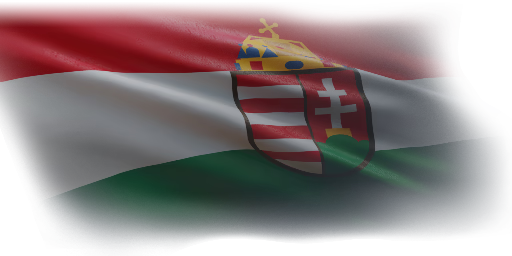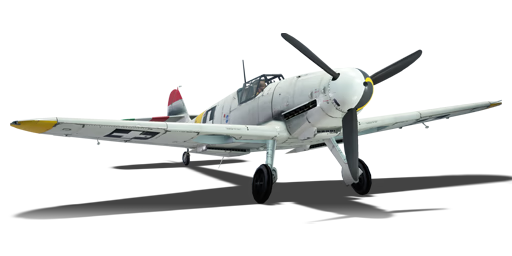

Aviation
◐Bf 109 G-2
IV
Rank
AB
5.3
RB
4.3
SB
4.3
Battle rating
Italy
Research country
Fighter
Main role
4,640

Purchase

Premium vehicle
Status

Hungary
Operator
General information
Flight performance
Max speed
at 6,700 m
696656721673 km/h
Rate of Climb
23.119.527.719.5 m/s
Turn time
1920.718.120 s
Max altitude
10,360 m
Takeoff Run
250 m
Landing
flaps
flaps
Take-off
flaps
flaps
Combat
flaps
flaps
Air
brake
brake
General characteristics
Crew
1 person
Engine
Length
9.2 m
Wingspan
9.9 m
Wing Loading
185 kg/m²
Weight:
Base weight
2.72.782.632.77 t
Fuel in main tanks
0.3 t (59m)
Limits:
Max Speed Limit (IAS)
790 km/h
Mach Number Limit
0.82 M
G limit
≈ -6/13 G
Flap Speed Limit (IAS)
L / T / C
260 / 409 / 438 km/h
Gear Speed Limit (IAS)
360 km/h
Offensive armament
20 mm MG 151 cannon
Ammunition
200 rounds
Fire rate
700 shots/min
One-second Burst Mass
1.29 kg
| Belt | Belt filling | Armor penetration (mm) at a distance: | |||||
|---|---|---|---|---|---|---|---|
| 10 m | 100 m | 500 m | 1000 m | 1500 m | 2000 m | ||
| IT/IT/APHE/HEI | 21 | 19 | 8 | 3 | 1 | 1 | |
| IT/HEI/HEI/AP-I | 27 | 24 | 14 | 7 | 3 | 2 | |
| AP-I/HEI/HEI/HEI/HEI/IT | 27 | 24 | 14 | 7 | 3 | 2 | |
| APHE/APHE/APHE/IT | 21 | 19 | 8 | 3 | 1 | 1 | |
| FI-T/FI-T/FI-T/IT/IT | 21 | 19 | 8 | 3 | 1 | 1 | |
| HEI/HEI/HEI/APHE/AP-I | 27 | 24 | 14 | 7 | 3 | 2 | |
2 × 7.92 mm MG 17 machine gun
Ammunition
1,000 rounds
Fire rate
1,200 shots/min
One-second Burst Mass
0.21 kg
| Belt | Belt filling | Armor penetration (mm) at a distance: | |||||
|---|---|---|---|---|---|---|---|
| 10 m | 100 m | 500 m | 1000 m | 1500 m | 2000 m | ||
| AP-T/AP-I/AI | 9 | 8 | 6 | 3 | 0 | 0 | |
| AP-T/AP/AI/AP-I | 13 | 12 | 7 | 3 | 2 | 0 | |
| AP-T | 9 | 8 | 6 | 3 | 0 | 0 | |
| AI/AP/AP/AP/AI | 13 | 12 | 7 | 3 | 2 | 0 | |
Suspended armament
Setup 1
4 × 50 kg SC50JA bomb
Setup 2
250 kg SC250JA bomb
Setup 3
Flam C 250 incendiary bomb
Setup 4
2 × 20 mm MG 151 cannon (secondary)
Economy
Repair cost
AB
1,695 

RB
3,441 

SB
4,882 

Crew training
10,000 

Experts
290,000 

Aces
940 

Research Aces
960,000 

Reward multiplier
AB / RB / SB
 2 x (95 / 215 / 455) %
2 x (95 / 215 / 455) % 
 2 x 166 %
2 x 166 % 

Premium vehicle
All modifications are unlocked
Flight performance | |
|---|---|
Survivability |
|---|
Weaponry | ||
|---|---|---|
Rating by players
You must play more than 3 battles for the last week and more than 10 battles in a vehicle to rate it.
Like:
24
Flight performance:
Not enough ratings
Survivability:
Not enough ratings
Aerial combat:
Not enough ratings
Ground attack:
Not enough ratings
Balance:
Not enough ratings
Tips & Tricks
This space is currently empty
Do you know any interesting vehicle features?
Loading...
No articles about this vehicle yet
Become the first author and get rewards!
Write a guide, tell about interesting historical facts, make a tutorial or simply an interesting post.
No more content